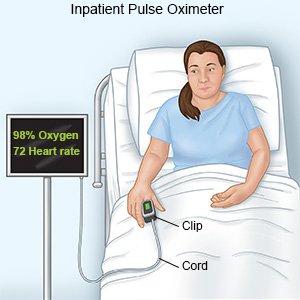Community Acquired Pneumonia
Medically reviewed by Drugs.com. Last updated on Apr 6, 2025.
Community-acquired pneumonia (CAP) is a lung infection that you get outside of a hospital or nursing home setting. Your lungs become inflamed and cannot work well. CAP may be caused by bacteria, viruses, or fungi.
 |
WHILE YOU ARE HERE:
Informed consent
is a legal document that explains the tests, treatments, or procedures that you may need. Informed consent means you understand what will be done and can make decisions about what you want. You give your permission when you sign the consent form. You can have someone sign this form for you if you are not able to sign it. You have the right to understand your medical care in words you know. Before you sign the consent form, understand the risks and benefits of what will be done. Make sure all your questions are answered.
Activity:
Sit up regularly, or get out of bed to help you breathe easier, and get better faster. Your healthcare provider may want you to do deep breathing and coughing. Deep breathing helps to open the air passages in your lungs. Coughing helps to bring up mucus from your lungs.
An IV
is a small tube placed in your vein that is used to give you medicine or liquids.
Medicines:
- Antibiotics may be given for at least 5 days to treat a bacterial infection.
- Antifungals may be given to treat a fungal infection.
- Antivirals may be given to treat a viral infection or to keep your symptoms from becoming severe.
- Bronchodilators may be given to help open the air passages in your lungs, and help you breathe more easily.
Tests:
- X-ray or CT scan pictures may show a lung infection or other problems, such as fluid around your lungs. You may be given contrast liquid to help your lungs show up better in the pictures. Tell the healthcare provider if you have ever had an allergic reaction to contrast liquid.
- A pulse oximeter is a device that measures the amount of oxygen in your blood.

- Blood and sputum tests may be done to check for the germ causing your infection.
- Bronchoscopy is a procedure to look inside your airway and learn the cause of your airway or lung condition. A bronchoscope (thin tube with a light) is inserted into your mouth and moved down your throat to your airway. You may be given medicine to numb your throat and help you relax during the procedure. Tissue and fluid may be collected from your airway or lungs to be tested.
- Nucleic acid-based testing , also called a PCR test, may be used to check for a virus causing your pneumonia. You may need the test if you have severe CAP or a weakened immune system.
Treatment:
- Breathing treatments may be used to help open your airways so you can breathe easier. A machine is used to change liquid medicine into a mist. You will breathe the mist into your lungs through tubing and a mouthpiece. Inhaled mist medicines act quickly on your airways and lungs to relieve your symptoms.
- You may need extra oxygen if your blood oxygen level is lower than it should be. You may get oxygen through a mask placed over your nose and mouth or through small tubes placed in your nostrils. Ask your healthcare provider before you take off the mask or oxygen tubing.
RISKS:
Your symptoms may get worse. Fluid or infection may get trapped in the lining around your lung. Community-acquired pneumonia may become life-threatening.
CARE AGREEMENT:
You have the right to help plan your care. Learn about your health condition and how it may be treated. Discuss treatment options with your healthcare providers to decide what care you want to receive. You always have the right to refuse treatment.© Copyright Merative 2025 Information is for End User's use only and may not be sold, redistributed or otherwise used for commercial purposes.
The above information is an educational aid only. It is not intended as medical advice for individual conditions or treatments. Talk to your doctor, nurse or pharmacist before following any medical regimen to see if it is safe and effective for you.
Learn more about Community Acquired Pneumonia
Treatment options
Care guides
Further information
Always consult your healthcare provider to ensure the information displayed on this page applies to your personal circumstances.
